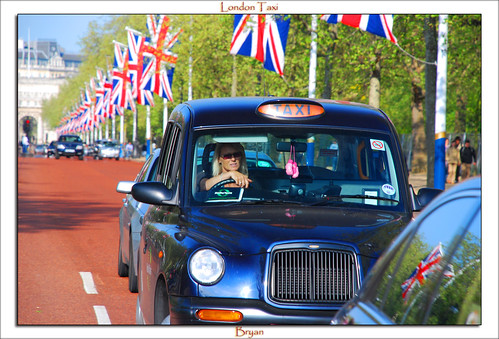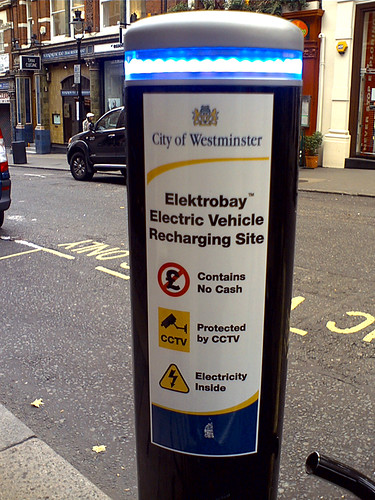(Source: Autoblog, Washington Post, Detroit Free Press, AFP via Google)

Image Courtesy: Jalopnik
Clears Senate
After narrowly surviving an attempt by Sen. Judd Gregg, R-N.H. to strip it from a war-spending bill, the Cash for Clunkers program passed the Senate yesterday evening. Well, the $106 billion war-spending bill passed the Senate on a 91-5 vote, but the $1 billion scrapping program earlier survived Sen. Gregg’s attempt to have it removed and thus passed, as well. Now the bill makes its way to President Obama, who is expected to sign the bill into law, after which the U.S. Transportation Department reportedly has one month to figure out how the Cash for Clunkers program will be run. Since Congress reduced funding for the program from $4 billion to just $1 billion, it’s expected that the money will run out long before the program is scheduled to end on November 1.
“We are gratified that the Congress delivered on this administration priority, and President Obama looks forward to signing it into law,” according to an administration statement.
Details, Details, Details,
Vehicles purchased after July 1 will be eligible for the refund vouchers worth as much as $4,500 to turn in gas guzzlers and buy new cars that are more fuel efficient.
The agency in charge of administering the program, the National Highway Traffic Safety Administration, will work out all the details within 30 days of enactment, according to Rae Tyson, spokesman for NHTSA.
Congress predicts this will result in the sale of about 250,000 new vehicles. The funding is good only until Nov. 1 and could run out before that. In that case, the voucher pro gram — unless Congress ap propriates more — would end.
Consumers would be able to start using the vouchers as soon as the National Highway Traffic Safety Administration finalizes the rules — a process that must conclude within 30 days of the president’s approval.
Under the program, trade-in vehicles, 1984 models or newer, must have average fuel economy of no more than 18 miles per gallon. And the new car or truck must get better gas mileage than the one that was scrapped.
The payoff grows depending on the difference in the fuel efficiencies of the old and new cars. For instance, a new car getting at least 4 more miles per gallon than the old car will be eligible for a $3,500 voucher. A new car getting at least 10 more miles per gallon would get a $4,500 voucher.
To guarantee vehicles are actually roadworthy — and not just sitting on cinder blocks — trade-ins must be registered and insured to the same owner for at least a year.
Kudos & Pats in the Backs

Image Courtesy: Apture
Cash for clunkers proponents in Congress said the subsidies will spur sales.”The simple fact is that we need to get Americans into car showrooms and this is the bill that will do it,” said Rep. Candice Miller, R-Mich., in a statement.
Sen. Debbie Stabenow, D-Mich., said the program will boost jobs in auto states. “This program will provide an economic stimulus at a time when hardworking families need it most,” Stabenow said in a statement.
GM said it had decided to keep 60 of the more than 1,000 dealers with whom it had sought to terminate agreements. The reversals were made after the automaker corrected financial information that was used to evaluate which stores to keep. Dealers applauded the Senate’s action yesterday, and some got additional good news. John McEleney, chairman of the National Automobile Dealers Association, hailed the measure, saying it “will boost consumer confidence, get the economy going again and reduce our dependence on foreign oil. Congress is giving consumers a strong incentive to replace their older vehicles with new, more fuel efficient cars and trucks.”
Transportation Secretary Ray LaHood said “The program is an important step forward for America. “It provides incentives for consumers to buy new, more fuel-efficient cars and trucks, providing a boost to the auto industry and protecting jobs, while limiting fuel use and greenhouse gas emissions.”
The legislation comes with number-one US automaker General Motors in bankruptcy and Chrysler emerging from court protection under a government-backed alliance with Italy’s Fiat in the face of plunging auto sales.
Cash for Clunkers Update from Europe (Channel 4 via Autobloggreen)

Several other countries, such as China and Italy, have offered similar trade-in vouchers. And lawmakers point to the success of Germany’s program as indication that vouchers can turn dismal auto sales around. At the end of the program’s first month, sales in Germany were up 21 percent from a year before. During the same period, U.S. sales slumped 41 percent. Now, a leading provider of automotive data and intelligence says the European motor industry is showing signs of recovery following the introduction of scrappage schemes on the continent. According to a new study by Jato Dynamics, the European automotive market may be rebounding ever so slightly from its alarming lows of early 2009.
Though new car purchases are down by just over 13 percent year-on-year, there was actually a mild 2.4 percent improvement in May over April. The German market is now 39.7% up on May 2008 – a 20.3% improvement over last month’s figures. France, meanwhile, is up 11.8% over the figures for April. “If Germany provides a template for the other markets where scrappage schemes have been introduced, we may be at the very beginning of a period of recovery in Europe. It’s far too early to know what the sustained effects of the incentives will be, but at a time when the industry needs to see some rays of hope, it’s encouraging to witness some improvement ” says David Di Girolamo, Head of Jato Consult. Interestingly, small, fuel efficient hatchbacks are performing better than the rest of the market, which is thought to be due to the various scrapping schemes in Europe.
The US market has steadied somewhat from lows earlier this year but the sales pace in May remained 33.7 percent below that of one year ago. Let’s hope the American consumers will follow their European counterparts in boosting the vehicle market> Eeven if it is only a liitle, the market can use any push to build its recovery.








